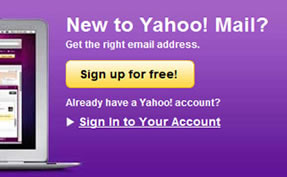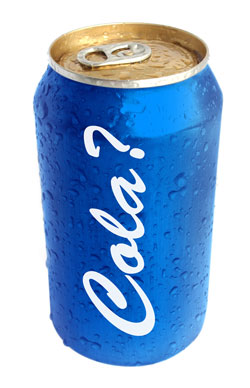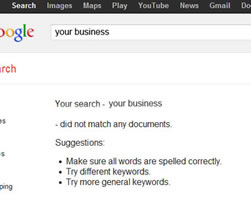4 Common Crimes of Start Up Businesses
If you were looking for some legal advice, i’m sorry to disappoint. Law isn’t my speciality but design is! This article covers some all too common crimes that start up businesses can commit when building their brand.
We all know our share of major brands, every day we encounter literally hundreds of brands that we recognise, trust and show loyalty to. At the supermarket, the perception of the brands that we see have the power to influence our shopping habits but we don’t instantly trust every brand we see. Far from it. There are many conscious and sub conscious factors that affect whether we will part cash or not and this is where the most successful brands are winning every day. Your home is full of them!
Becoming a trusted household name may seem a long way off but despite this, you may have already established a recognised brand or are working hard to achieve your desired recognition. You may have just started up and are looking for some tips to build the brand of your dreams.
No matter where you are in the branding process, here are some common crimes that can have a big effect on earning customer trust and distinguishing yourself as a professional solution.
1) Free Email Accounts – Bad impressions
 One of the first tasks completed when it comes to starting up a business is to establish the name and contact details. Free email accounts like Gmail, Yahoo, Hotmail, BT and AOL can be set up in minutes by simply entering your business name with @aol.com etc. as the remainder and then you are ready to liaise with potential customers.
One of the first tasks completed when it comes to starting up a business is to establish the name and contact details. Free email accounts like Gmail, Yahoo, Hotmail, BT and AOL can be set up in minutes by simply entering your business name with @aol.com etc. as the remainder and then you are ready to liaise with potential customers.
It is acceptable for businesses who have not yet decided on the most appropriate domain name for dedicated email, most businesses will progress from free email accounts once a domain name is purchased. Unfortunately many well established businesses stay attached to the convenience of these ‘freemail’ solutions possibly fearing potential hassle of transferring contacts and migrating to a new email address.
Why this is a crime…
Setting up a free email account is easy, anonymous and fast and for these reasons it is often adopted by spammers, casual and inexperienced users plus people who wish to conduct business undisclosed by not registering their details under a domain name.
Setting the right impression when communicating with customers is paramount to establishing trust. For example, If your first point of contact with a car insurance company was from carinsurance83 @yahoo.com it may raise the suspicion of your customers. By using a unique domain, such as sales @carinsurance.com then it presents you in a professional manner.
Domains can be registered from as little as £6 per year, allowing you to send dedicated email from a tailored address specific to your business. A very small price to pay to make the right impression and to let customers know you take your communication seriously.
2) Using templates – Diluting Drowning your brand
 Templates at first can feel like a big weight off your shoulders. No need to pay a designer for business cards, websites, stationery etc, a wide range of styles to choose from and they come ready to go. Can there possibly be a catch? Most definitely!
Templates at first can feel like a big weight off your shoulders. No need to pay a designer for business cards, websites, stationery etc, a wide range of styles to choose from and they come ready to go. Can there possibly be a catch? Most definitely!
In the same way that free email accounts are quick and easy solutions for businesses that have yet to decide on their branding plan and appearance, templates offer the same benefits.
Pick a design that represents your business sector, add your contact details, add your logo and order.
Why this is a crime…
A template by default is a generic design that can be applied by many users who can amend the information to suit their own company and in the pursuit of successful branding, generic is criminal.
A perfect example could be made if we imagine 2 plumbers starting up and looking to give out business cards to their prospective customers. Looking to save some money, plumber 1 opts for one of the popular online printing businesses that offer templates as well as cheap printing. He picks a plumber design that he likes and orders.
Plumber 2 also decides to use the same online print services but enlists the help of a designer to create a unique business card design with a logo that fits him perfectly. They both get their cards delivered and send them out to hotels, restaurants, shops, landlords and so forth.
Plumber 1 does not know it, but due to the ease of using templates from popular business card printers, he has most likely picked the same card design that other plumbers are using. At the very first hurdle, plumber 1 has lost a goal in branding, to be unique. Plumber 2, for a very small design fee in comparison, has business cards that are unique and tailored to his business that he knows will never blend in amongst duplicate cards. He has taken the first step towards his goal in branding…stand out from the crowd.
3) Inconsistency – Change for change sake
 When discussing branding, the same company always enters conversation. Coca Cola. It is at the forefront of our branding memories for good reason. We have all bought their products, they are hugely successful and recognised all over the globe.
When discussing branding, the same company always enters conversation. Coca Cola. It is at the forefront of our branding memories for good reason. We have all bought their products, they are hugely successful and recognised all over the globe.
As a successful brand, how many times in the past 125 years have they changed their appearance? Approximately 6. Of those 6 changes, only 1 was dramatic and it was scrapped after only a year in favour of the original logo. Coca Cola has became so recognisable due to its consistency in maintaining its strong brand in advertising for over a century that it is the epitome of branding success.
Of course there are great reasons to rebrand. Perhaps the brand you currently have does not target the correct audience that it should. Maybe your logo design is weak or your brand does not reflect the type of company you are or intend to be. These are great reasons, but when you have a brand that is picking up pace because your customers identify with it then any change you make should be very carefully considered.
Why this is a crime…
Change for change sake can ruin the customer loyalty that you worked hard to build up.
Change can be confusing to your loyal customers. When a customer becomes loyal to a brand and bought into the company philosophy, change can be met with strong reactions. Here are 14 cases of re-branding going completely wrong and having to be rescued. Once your brand is etched in customers memories they have a mental picture of how good you are, what to expect, the quality of your services or products and the value that they receive. In essence, when your brand is established it basically becomes a familiar signpost. When you go to buy new trainers you might pick a pair of Nike Air trainers knowing roughly what to expect.
 The Nike tick was subconsciously all you needed to know in addition to the price and style as the Nike brand is well established and you have probably owned a pair or two previously. Imagine if the trainer you held in your hand said Nike but it wasn’t the traditional swoosh. It was a thumbs up graphic and the word Nike was in a handwriting font in pastel colours. That old signpost has now turned into a stop sign as the familiar brand you trusted is suddenly unfamiliar.
The Nike tick was subconsciously all you needed to know in addition to the price and style as the Nike brand is well established and you have probably owned a pair or two previously. Imagine if the trainer you held in your hand said Nike but it wasn’t the traditional swoosh. It was a thumbs up graphic and the word Nike was in a handwriting font in pastel colours. That old signpost has now turned into a stop sign as the familiar brand you trusted is suddenly unfamiliar.
Brand trust may have to be rebuilt as your customers will look to establish if the brand is now different from their expectations, do they like the appearance, is it suitable for their age group, is the brand targeting a new audience that they don’t fit into, has Nike been bought over by a new company?
That change may have been carefully considered and warranted to boost floundering sales, break into a new prosperous market or many other positive reasons. If the change was hastily made purely because someone had decided they were bored of seeing the same tick again and again, then perhaps this would become another one of the famous branding disasters that destroys the trust of previous loyal buyers. Always reinforce your brand and only reinvent when it is smart to do so.
4) No website – Suspicions raised?
 There are approximately 644, 275, 754 websites online in 2012 yet there were only 25,675,581 in 2000. In 12 years the web has exploded by 2500%. Gone are the days when it was considered highly professional or a luxury for a business to have a website. We now live in times where businesses are expected to have a website as well as social media profiles for news and interaction.
There are approximately 644, 275, 754 websites online in 2012 yet there were only 25,675,581 in 2000. In 12 years the web has exploded by 2500%. Gone are the days when it was considered highly professional or a luxury for a business to have a website. We now live in times where businesses are expected to have a website as well as social media profiles for news and interaction.
Your customers are also much more web savvy than 10 years ago and they are more resistant to being duped online and rightfully so. They have to be satisfied by their own means that the new business they have found (through offline methods such as word of mouth, marketing, directories) is a business that is to be trusted. It is almost essential that you need an online presence to satisfy these customers.
This is where Facebook enters the discussion. The budget is tight, so a Facebook page is set up in the theory that it basically does everything a website can do, it appears online and it’s free. No need for a dedicated website now!
Why this is a crime…
Customers may form an opinion that you are dated, not established or technically savvy and your web competitors will be taking a large chunk of your custom.
How many times have you heard about a new business and your first urge was to Google it? You want to form your initial expectations of the business, find out what they are about and how they present themselves. While social media plays a very important role in developing your online brand, the company website is still the king. Social media is a compliment, the website is the base.
No web presence at all leaves customers lacking in vital information about products, services, costs, company background and much more. Although they can call the business phone number, it is easier to find another business online that does have a website and the accompanying information.
Having only a Facebook page falls into the same category as templates and free email. The process is quick, free, anonymous and easy which can attract some unreliable and untrustworthy companies. By having a website you have shown a commitment to your prospective customers that you are partially established and value them enough to provide the information that they need in the expected format.
Even if you are on a limited budget, there are plenty of low cost solutions to have your own website. For clients who understand this point but lack the funds for a fully developed website, I offer low cost single page website design packages that are search engine optimised and fully customised to your brand… no generic templates whatsoever!
Build your brand by ensuring that you have prominent exposure in the most crucial areas and give your customers reason to trust and recognise you and try to stay away from these startup crimes!








